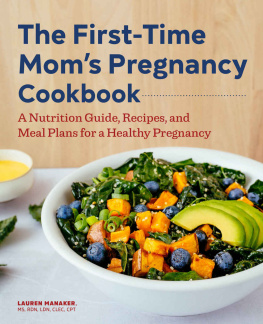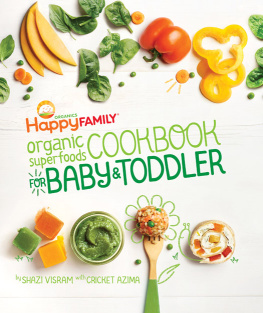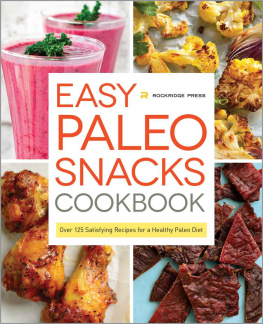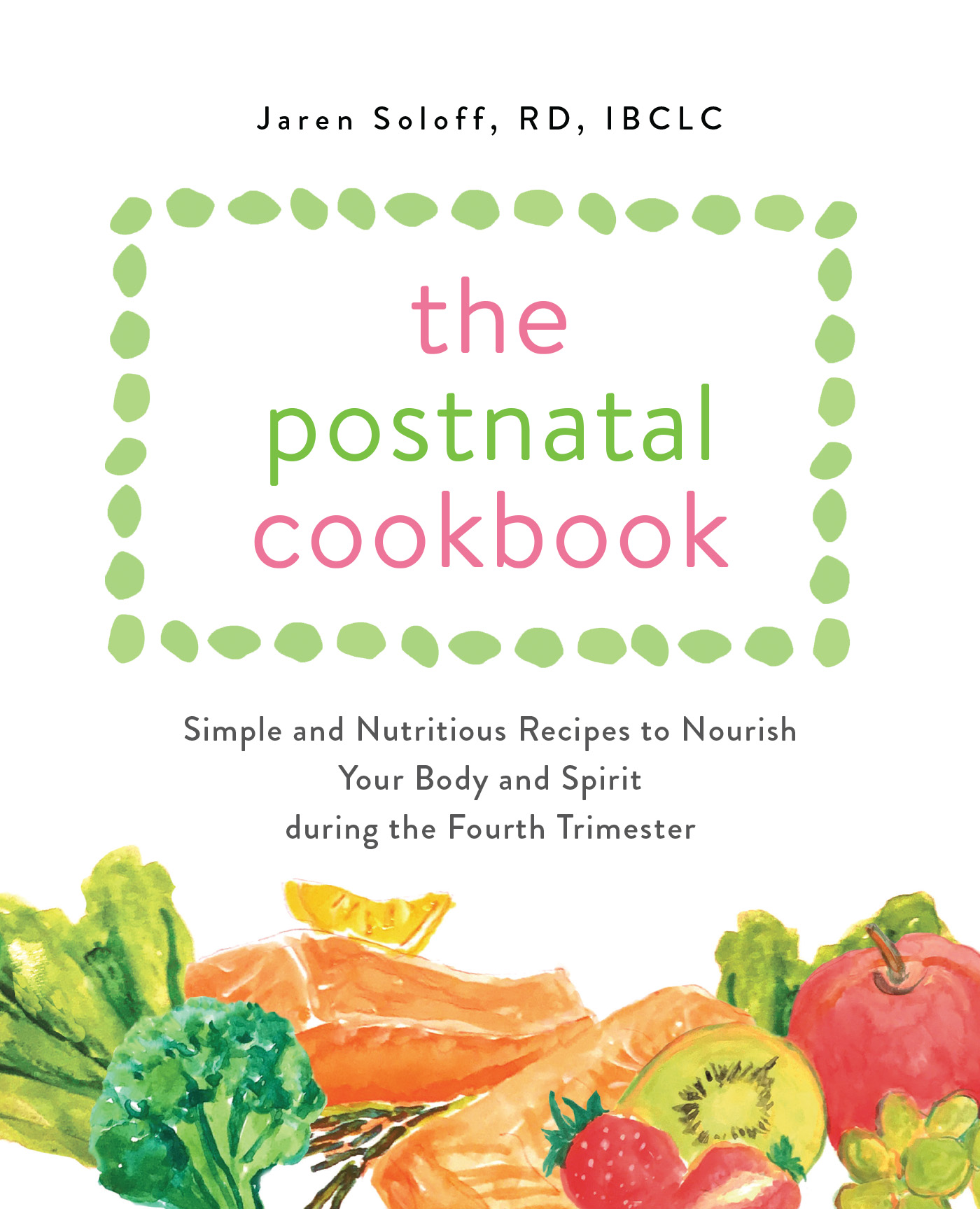Contents
Guide
Introduction
Since youre reading this cookbook you very likely may be a new or expecting mother, or a loved one looking to provide the utmost support and nourishment for a new mother in your life. You are likely no stranger to the importance of nutrition throughout the journey that is pregnancy; however, the period after birth deserves just as much, if not more, attention to nutrition to help you thrive.
Postnatal refers to the period immediately after birth, and for the purposes of this cookbook, it is used interchangeably with postpartum and perinatal, which both define the time after childbirth. We are continuing to learn that optimal postnatal nutrition is influenced not just by diet, but by the complex layers that make up physical health, as well as the emotional, social, and cultural support women receive through pregnancy and birth. These factors all contribute to and make up the landscape of a nourishing postpartum.
THE POSTNATAL PERIOD
Pregnancy, birth, and the early days of postpartum are filled with rapid growth, change, and learning. We have learned to support and respect the prenatal period when babies are rapidly developing inside the womb in preparation for the outside world. From choosing the best prenatal vitamins to building a meticulous birth plan, expectant mothers navigate a time that is rife with emotional and physical shifts.
Whether it is their first birth or their fourth, postpartum can take expectant mothers by surprise if they enter into its gates unprepared for the journey ahead. Too often, the primary focus after birth shifts to caring for and nourishing the newborn. Often, mothers are left behind to recover inadequatelyphysically and emotionally. After birth, an increasing number of women struggle with pelvic floor dysfunction, relational strain, and perinatal mood and anxiety disorders. We simply cannot afford to leave out a plan to nourish mothers after birth.
With this in mind, what is a realistic expectation for recovering from birth, and how can we best support women in preparing for this precious time? While still not collectively defined in terms of length, for many non-Westernized cultures around the globe, several weeks (40 days) is often considered the hallmark of time mothers need to recover from birth and establish breastfeeding. While the terminology may vary depending on the culture, such as the golden month in China; la cuarentana in Mexico; sitting in the nest in Vietnam; and, in the past, a period of lying in in the United States, the principle is the same throughoutextended rest. From an anthropological perspective, research has noted that cultures with a social structure that integrates postpartum care have lower incidences of women with postpartum depression.
Another common theme in postpartum care in non-Westernized cultures is confinement, where women have an extended period of rest, are cared for by their mothers or family members, and are cooked nourishing meals to promote healing. This practice of confinement serves not only to relieve new mothers of mundane household tasks but to symbolize that she is being nurtured as she transitions into her new role. Lastly, one of the most distinctly different practices from that of Western cultures is the acknowledgment of a womans new status as a mother and the honor that goes along with it. Often, these cultures recognize practices such as gift-giving and providing personal care for the mother through social rituals such as washing her hair and feet to show adoration.
In striking contrast to these principles, the current postpartum practices of Westernized culture see postpartum as a race to bounce back and get back to normal as quickly as possible. In a common hospitalized birth, after the initial recovery from birth, the obstetrician or midwife will pay a brief visit. After this, providers essentially offer no care for women until the six-week medical appointment. At this six-week medical follow-up, women are then evaluated for exercise and sex clearancehowever, it is uncommon for a provider to provide support and guidance for common postpartum ailments such as physical healing, nutritional support, or breastfeeding/feeding concerns. At this time, most employers also expect women to return to work. If a woman is lactating, she will now plan and prepare for pumping and storing breastmilk.
This sociocultural background sets the stage for many of the postpartum challenges that increase womens physical and emotional vulnerability. Consider other times in life when our bodies experience an increase in physical demands, such as during an injury or illness, and the support for physical healing, adequate nutrition, and rest that we receive. These essential pieces of postpartum, however, are lacking in the current model of care. Within the modern social climate, the tremendous strides women have made in their career mobility are quickly undercut by messaging that emphasizes a quick return to work and productivity without concern for physical healing or acknowledgment of the transformative process of birth.
Whats viewed as the ideal family dynamic places independence over interdependence and, thus, comes at the risk of mothers being more disconnected from networks of support. More often, new families live away from relatives who historically provided the foundation of support to nourish them. The isolation and lack of adequate support can disrupt a mothers physical healing and interrupt the instrumental bonding and nurturing needed for the mother and infant during the first few weeks. Many families know of the adage it takes a village to raise a child but lack the connections needed to honor this critical recovery period of postpartum.
If we are going to support optimal outcomes for children and families, we have to work to shift the current framework in Western society toward practices that embody rest, nutrient repletion, and slowing down. While many of us long for an idyllic 40-day resting period, we must also balance these practices with the current cultural dynamic set in place for us.
While Western culture does have a general practice of providing meals for those who have welcomed a newborn into their home, a mothers true postpartum healing and repletion cannot be completed with food alone. In order to assist women in healing, we not only have to provide support with the sometimes mundane tasks of cooking, cleaning, and infant care, we also have to make space to allow women to rest, recover, and heal.
The Postnatal Cookbook proposes a middle path whereby we can integrate postpartum nutrition practices in a manner that does not require exhausting recipes or extensive chopping and preparing, but rather a simple whole-foods approach to healing and creating a postpartum experience that nourishes mind, body, and soul.
Chapter 1 Postnatal Nutrition
To further support the healing needed during the postpartum period, we first need to continue to understand the unique variables that women face during this time period and investigate just how long these variables continue to impact them after they give birth. To date, while many clinicians and health-care providers understand there is a level of physical healing to achieve postpartum, they offer virtually no nutritional support during this time other than the advice that women who are lactating will likely experience an increase in hunger. Even less is known about the differentiation between women who lactate and those who are non-lactating and identifying the unique differences these physiological states present in the postpartum period. Considering the extent to which the body during birth has been stretched, torn, and potentially cut, the level of postpartum nutrition knowledge in health professionals is underwhelming.









